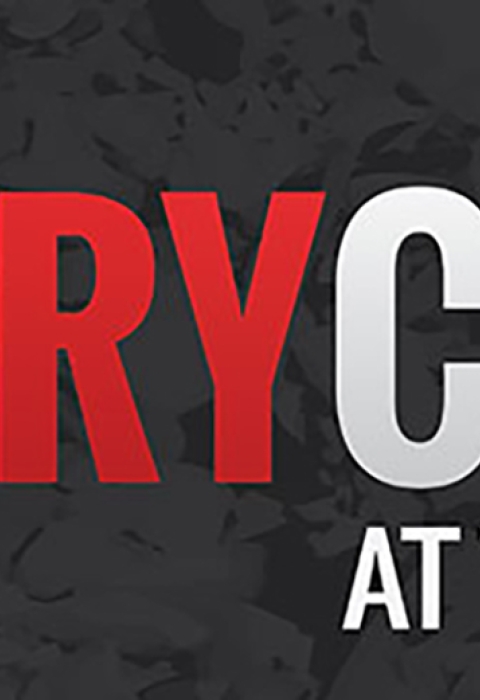The U.S. Fish and Wildlife Service today announced winners of its Ivory Crush Design Challenge, which invited entrants to propose powerful visual concepts for public displays of crushed ivory from the U.S. ivory crushes. Kelly Lance of Monterey, Calif., and Jacqueline Nott of Auburn, Calif., will see their ideas on paper transformed into three dimensions during the coming months as the Service works with the Association of Zoos and Aquariums (AZA) to build their designs and identify publicly accessible venues with high visibility to display the exhibits.
“These designs provide a compelling message to the American public about the need to protect African elephants by reducing our demand for ivory,” said Service Director Dan Ashe. “Each concept takes a personal approach to a global problem, and we hope these displays will prompt greater awareness and action by everyone who sees them.”
The pieces will augment the Service’s public awareness and education efforts to help reduce demand for elephant ivory and other illegal wildlife parts and products. In November 2013 and June 2015, the Service crushed a total of more than seven tons of elephant ivory confiscated during the past 25 years. The pro-bono design challenge was announced in 2014, attracting dozens of entrants and a wide variety of ideas for public displays.
Lance, a commercial sculptor and science illustrator, proposed a massive cube-shaped acrylic container that will be filled with crushed ivory, emphasizing the sheer volume and scale of the poaching crisis. After it is built, the single exhibit is expected to be available for public viewing and interaction at a highly visible location yet to be determined.
“I am honored to be a recipient of the U.S. Fish and Wildlife Service’s Ivory Crush Design Challenge award,” said Lance. “It was definitely a challenge to create a design to raise awareness about the rapid increase in elephant poaching. It is my hope that this exhibit will convey the magnitude of the crisis. When you are standing next to a substantial amount crushed ivory and it towers over you, I want you to feel the weight of this loss, and I want it to inspire you, and everyone around you to change our culture and to protect what remains of living, wild elephants.”
Nott, an artist and product designer, proposed an interactive standing display that will be replicated for use at multiple locations. The display features an hourglass-type mechanism that can be turned by the viewer, allowing crushed ivory to flow from top chamber to bottom chamber, demonstrating how time is running out for African elephants unless we take action against traffickers. The rotating wheel also will contain spent ammunition representing the number of elephants killed every day.
“As I transferred my hourglass concept from my imagination to a piece of paper, I imagined what it would feel like if my idea was selected,” said Nott. “It was exciting to imagine it possibly coming to life, but not even my imagination could prepare me for how honored and excited I am at this moment now that it has actually come true. Wildlife conservation is such an important part of my life, and this, so far, is my greatest achievement both personally and for wildlife conservation.”
The two-phase judging process included representatives from nongovernmental organizations including AZA, International Fund for Animal Welfare and World Wildlife Fund. Judges for the final phase included high-level representatives from the arts, academia, business and marketing, including BBDO, National Geographic, Martin Guitar and Yale University.
“Like the U.S. Fish and Wildlife Service, AZA-accredited zoos and aquariums have been educating the public for years about the tragic impacts of wildlife trafficking,” said Kris Vehrs, AZA interim president and CEO. “We were proud to stand with the Service when they crushed tons of confiscated ivory, and we are just as pleased with the public for joining us in the Ivory Crush Design Challenge. We are now looking forward to how the winning designs will be used to continue to educate visitors at AZA-accredited zoos and aquariums and other venues about the plight of elephants and other species in the wild and how they can make a difference.”
Elephant poaching is at its highest level in decades, and it continues to rise. Approximately 100,000 elephants were killed between 2010 and 2012 for the illegal ivory trade, and scores of park rangers who work to protect them also have been killed.
The winning designs were selected based on their ability to convey the scale and urgency of the wildlife trafficking crisis and appeal to viewers in a way that will make them not only sympathetic to the plight of wildlife but want to do something about it. Crushing the ivory rendered it worthless to consumers, sending the message that ivory should be valued only when attached to a living elephant. To be considered for entry, designs could not glorify or add value to the crushed ivory.
In addition to this and other awareness-building activities, the Service is also working as part of an all-of-government approach to reverse the balance of the illicit wildlife trade from low risk–high reward to high risk–low reward. This includes implementation and enforcement of strong domestic regulatory measures and international collaboration with range countries and nations that lead the demand for illegal wildlife products.
For more information on the U.S. Ivory Crushes visit: http://www.fws.gov/le/elephant-ivory-crush.html. For more information about the Service’s broader work to conserve African elephants visit http://www.fws.gov/international/wildlife-without-borders/african-elephant-conservation-fund.html.



